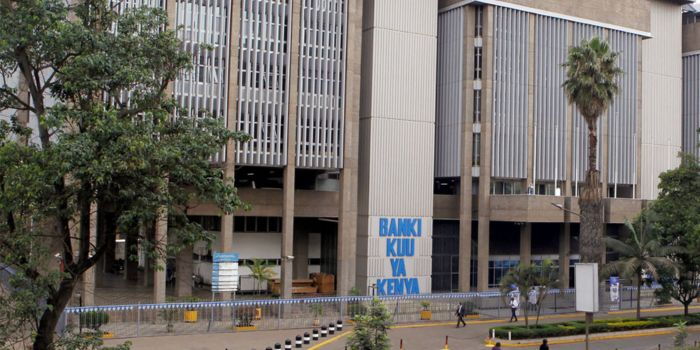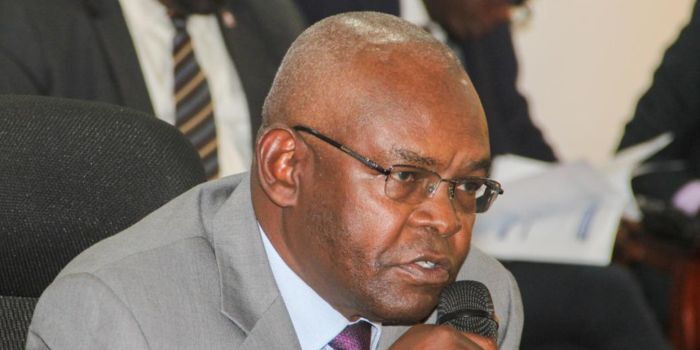Kenya's Resilient GDP Growth and Strategic Investment Opportunities in 2025: Navigating Frontiers with Caution and Confidence
Harrison BrooksThursday, Jul 3, 2025 6:03 am ET
![]() 5min read
5min read
Kenya's economy has emerged as a bright spot in Sub-Saharan Africa, defying global headwinds with a growth trajectory underpinned by monetary policy easing, stable inflation, and sector-specific momentum. As the Central Bank of Kenya (CBK) continues its rate-cut cycle and diaspora remittances bolster household resilience, investors are eyeing opportunities in agriculture, transport, and fintech. However, navigating Kenya's frontier market requires balancing optimism with vigilance toward external debt and geopolitical risks.

The CBK's aggressive rate-cutting cycle—marking the sixth consecutive reduction to 9.75% by May 2025—has injected liquidity into Kenya's financial system. This easing, driven by inflation falling to 3.8% (below the 5±2.5% target), has lowered borrowing costs for businesses and households. The illustrates a deliberate shift toward stimulating credit growth, which rose to 2.0% in May 2025 after earlier declines. For investors, this signals a favorable environment for sectors like real estate and consumer discretionary, where access to affordable capital can drive expansion.
Kenya's inflation dynamics have stabilized remarkably, with core inflation at 2.8% and non-core (food/energy) prices easing. This stability has freed the CBK to prioritize growth over hawkish policies, a stark contrast to many emerging markets grappling with persistent price pressures. The highlights the disconnect between global energy shocks and Kenya's localized resilience, thanks to agricultural self-sufficiency and competitive remittance-driven consumption. Stable inflation also supports household budgets, enabling sustained spending in sectors like healthcare and education.
Kenya's agricultural sector, contributing 23% to GDP growth in 2023, benefits from favorable weather and government initiatives like the . Investors should watch companies in crop production and agro-processing, such as , which leverages agricultural inputs for its beverages and food products.
The revival of Kenya's transport infrastructure—bolstered by projects like the Standard Gauge Railway and port modernization—positions the sector to capitalize on regional trade. and logistics firms like (a logistics hub) stand to gain as East African trade corridors expand.
Diaspora remittances, at 3.9% of GDP in 2023, are a lifeline for households and a growth engine for Kenya's digital payment ecosystem. Platforms like , owned by Vodafone's , dominate mobile money transfers. Investors might explore ETFs tracking frontier markets (e.g., ) or partner with fintech startups in cross-border payments.
Despite the positives, Kenya faces headwinds:
- While foreign reserves hold at $10.8 billion (4.75 months of imports), the current account deficit remains elevated at 1.8% of GDP. Rising global interest rates could strain debt servicing.
- Non-performing loans (NPLs) at 17.6% pose risks to financial stability, though banks have adequate provisions. Monitor for stress points.
- Neighboring conflicts and droughts could disrupt trade and agriculture.
Investors should adopt a :
1. Allocate to firms with exposure to high-value crops (e.g., tea, horticulture) and climate-resilient farming technologies.
2. Back digital payment platforms and remittance services, which benefit from Kenya's tech-savvy population and cross-border connectivity.
3. Transport Infrastructure: Invest in logistics hubs and port modernization projects tied to regional trade growth.
Avoid overexposure to dollar-denominated debt and monitor geopolitical developments closely. Consider hedging strategies for currency fluctuations, given the shilling's sensitivity to global flows.
Kenya's 2025 economy offers a compelling frontier market story: resilient growth, favorable monetary conditions, and sector-specific tailwinds. While risks like external debt and banking NPLs require careful navigation, the combination of policy support and structural strengths positions Kenya as a strategic destination for long-term capital. For investors willing to engage selectively and thoughtfully, Kenya's potential to outpace regional peers—projected at 5.2% GDP growth—makes it a frontier worth exploring.
Data sources: IMF, World Bank, Central Bank of Kenya.










